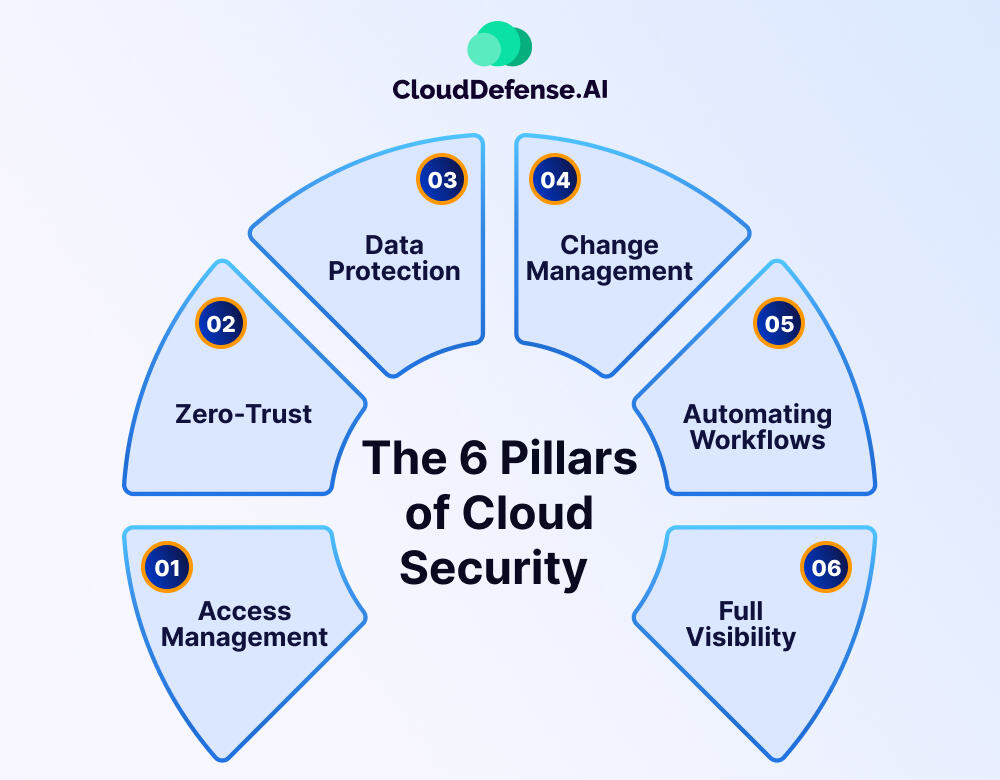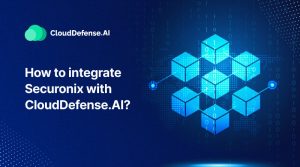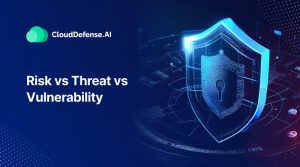The rise of cloud computing has blessed the tech industry with unimaginable capabilities. The ability to scale their businesses without the need for expensive hardware has turned out to be very profitable. However, there has been an increase in the amount of cybercrimes in the cloud that has given rise to a new domain in cybersecurity — Cloud Security.
So, what is cloud security?
Cloud security refers to a range of strategies and measures aimed at protecting sensitive data, applications, and infrastructure within cloud computing environments. It involves the implementation of technologies, policies, controls, and services to protect against various security threats.
In this article, we will cover everything there is to know about cloud security. Learn how you can protect yourself in the treacherous world of cloud computing.
Let’s dive right in!
What is Cloud Computing?

Before we get into cloud security, it is important to explore cloud computing. Cloud computing is a revolutionary framework in the IT industry that has transformed the way computing services are delivered and consumed.
It includes the on-demand delivery of IT resources—including servers, storage, databases, networking, software, analytics, and intelligence—over the Internet, commonly referred to as “the cloud.”
Traditionally, organizations relied on local servers and physical hardware to fulfill their computing needs, requiring huge investments in infrastructure procurement and maintenance.
However, cloud computing disrupts this conventional approach by offering users the ability to access and utilize resources from remote data centers, eliminating the constraints imposed by physical hardware and geographical boundaries.
This model of computing affords several compelling advantages. Firstly, cloud computing delivers faster innovation, enabling organizations to swiftly deploy and scale applications to meet evolving demands. Secondly, it offers unparalleled flexibility, allowing users to adjust resource allocation in response to fluctuating workloads dynamically.
Learn more: What is Cloud Computing? How It Works, Types & Benefits
Understanding Cloud Security and Its Importance
Businesses heavily rely on cloud computing to drive innovation and competitiveness. With the rise of cloud computing, there has been a stark increase in the amount of threats to the industry as well.
The risks associated with cloud computing, including misconfiguration and criminal activity, highlight the need for strong cybersecurity measures that are often articulated as cloud security measures.
Misconfiguration, which often happens by mistake, can accidentally reveal sensitive data. This was evident in the misconfigured Amazon S3 storage bucket. Similarly, criminal activities like phishing and malware attacks are big risks for companies storing lots of sensitive info in the cloud.
To stay safe from these risks, it’s crucial to use advanced cloud security methods such as Zero Trust Network Access, or CNAPPs in general.
Other than that, cloud computing comes with its own set of issues, such as dealing with rules and responsibilities and meeting compliance standards, which makes it essential to have a solid security plan in place.
By tackling these challenges head-on and adopting top-notch cloud security methods, businesses can keep their data, operations, and reputation secure.
Cloud Security is a Shared Responsibility
In cloud computing, you might have come across the concept of security on the cloud being a shared responsibility between users and cloud service providers. To explain further, shared responsibility refers to the division of security tasks between the cloud service provider, or CSP, and the customer.
The Shared Responsibility Model outlines the specific responsibilities of each party for securing various aspects of the cloud environment, including hardware, infrastructure, endpoints, data, configurations, settings, operating systems, network controls, and access rights.
According to this model, CSPs like AWS, Microsoft Azure, or Google Cloud are responsible for monitoring and responding to security threats related to the cloud infrastructure itself. This includes ensuring the security of hardware, infrastructure components, and underlying cloud services.
On the other hand, customers are responsible for protecting the data and assets they store in the cloud environment. This includes securing endpoints, managing user access, configuring security settings, and implementing appropriate security measures for applications and workloads deployed in the cloud.
The concept of shared responsibility ensures that both CSPs and customers play a role in maintaining the security of the cloud environment.
However, misunderstanding this model can lead to assumptions that cloud workloads are fully protected by the CSP, leaving them vulnerable to attacks targeting the operating system, data, or applications.
Shared Responsibility in Different Cloud Service Types
In practice, the division of responsibility varies depending on the type of cloud service delivery model being used: Software as a Service (SaaS), Platform as a Service (PaaS), or Infrastructure as a Service (IaaS).
Here’s how shared responsibility differs across these models:
| Type of Service | Responsibility of the Vendor | Responsibility of the User |
| SaaS | Security of Applications. | Securing endpoints, managing user access, ensuring network security, addressing misconfigurations, protecting workloads, and data security. |
| PaaS | Security of the platform, including both hardware and software. | Securing developed applications on the platform, managing endpoints, ensuring user and network security, and protecting workloads |
| IaaS | Security of the infrastructure | Securing all applications installed on the infrastructure, including the OS, applications, and middleware. Additionally, managing endpoints, ensuring user and network security, protecting workloads, and protecting data are essential aspects. |
Benefits of Cloud Security

Cloud security offers a range of benefits that help organizations protect their data, applications, and infrastructure. Here are some key advantages:
Enhanced Data Protection
Cloud security solutions employ advanced encryption techniques to protect sensitive data both in transit and at rest, ensuring confidentiality and integrity.
Scalability and Flexibility
Cloud-based security services provide unparalleled scalability and flexibility, allowing organizations to rapidly adapt to changing security requirements and evolving threats. This scalability ensures optimal performance and cost-efficiency.
Cost-Effectiveness
Unlike traditional on-premise security solutions, cloud security eliminates the need for substantial upfront investments in hardware, software, and personnel. With pay-as-you-go pricing models, organizations can align their security investments with actual usage, optimizing cost-effectiveness and maximizing ROI.
Global Coverage and Resilience
Cloud security uses a global network of data centers and points of presence to provide comprehensive coverage and resilience against cyber threats. By distributing security resources across geographically diverse locations, cloud providers mitigate the impact of localized disruptions, ensuring uninterrupted service availability and business continuity.
Managed Services and Expertise
Many cloud security providers offer managed services and expertise to complement their technology offerings. By partnering with experienced security professionals, organizations can offload the burden of managing security infrastructure and personnel, ensuring proactive detection and mitigation of security threats.
Continuous Innovation and Updates
Cloud security providers continually invest in research and development to innovate and enhance their security offerings. By leveraging cloud-based security solutions, organizations gain access to cutting-edge technologies and capabilities that evolve in response to emerging threats and evolving security requirements.
Compliance and Regulatory Alignment
Cloud security solutions help organizations achieve and maintain compliance with regulatory requirements by implementing strong security controls, encryption mechanisms, and audit trails. Cloud security providers often undergo rigorous third-party audits and certifications, assuring compliance and regulatory alignment.
Challenges of Cloud Security
Even with its powerful benefits, there are a wide range of challenges involved with cloud security. Here are some key cloud security challenges that organizations encounter:
Securing Third-Party Software and APIs
Vulnerable third-party software and insecure APIs can significantly broaden an enterprise’s attack surface, potentially exposing sensitive data. Many organizations utilize third-party applications within their cloud environments, making them susceptible to supply chain attacks like the SolarWinds incident.
Lack of Visibility
Cloud environments often consist of a combination of IaaS, SaaS, and PaaS components, leading to cloud sprawl and loss of control over resources. Without centralized visibility and real-time monitoring, organizations struggle to identify security vulnerabilities and respond to incidents promptly.
Shortage of Cloud Security Professionals
The global shortage of cybersecurity talent results in organizations becoming over-reliant on external resources and SaaS products to address cloud security challenges. A lack of in-house expertise hinders organizations from comprehensively addressing the intricate cybersecurity needs of their cloud-native environments.
Cloud Data Governance
Effective governance of cloud data presents challenges such as maintaining visibility across multiple cloud platforms, detecting data exposure, understanding data flow, and ensuring compliance with regulatory requirements. Failure to implement robust data governance measures can lead to data breaches and long-term consequences for businesses.
Managing a Rapidly Evolving Attack Surface
The scalability of cloud computing enables rapid expansion of cloud assets, resulting in a continuously evolving attack surface. Businesses must manage the risks associated with expanding and dynamic attack surfaces without compromising operational agility.
Insecure Interfaces and APIs
Improperly configured APIs and user interfaces are common causes of data breaches and security incidents in cloud environments. Businesses must prioritize the protection of interfaces and APIs to prevent unauthorized access to sensitive data.
Lack of Cloud Security Strategy and Skills
Organizations may lack a comprehensive cloud security strategy and the necessary skills to address cloud security challenges effectively. Poor planning and misunderstanding of shared responsibility models can result in security gaps and vulnerabilities in cloud environments.
Cloud Compliance
Organizations must adhere to regulatory requirements and compliance standards to protect sensitive data and mitigate legal and financial risks. Failure to implement adequate access controls and security measures can lead to non-compliance and regulatory penalties.
The 6 Pillars of Cloud Security

The 6 pillars of cloud security provide a framework for organizations to establish robust security measures in their cloud environments. These pillars include various aspects of security, from access management to data protection, ensuring that organizations can effectively mitigate cyber threats and maintain compliance. Let’s break down each pillar:
Access Management
The first pillar focuses on implementing secure IAM protocols. IAM allows organizations to control and monitor access to their cloud resources, ensuring that only authorized users have access to sensitive data and systems. By enforcing the principle of least privilege, organizations can minimize the risk of unauthorized access and potential data breaches.
Zero-Trust
The zero-trust security approach emphasizes the segregation of data and resources based on security requirements, as well as treating all users and devices as untrusted until proven otherwise. By implementing strict access controls and continuously verifying user identities, organizations can prevent unauthorized access and minimize the impact of security incidents.
Data Protection
Data protection is of top priority in the cloud, where sensitive information is stored and transmitted across networks. Encryption plays a crucial role in safeguarding data at rest and in transit, ensuring that it remains confidential and secure from unauthorized access. Additionally, organizations can implement data masking and tokenization techniques to further enhance data protection and minimize the risk of data breaches.
Change Management
Change management protocols are essential for governing changes to cloud environments and ensuring compliance with security policies. By implementing robust change management processes, organizations can track and monitor changes to their cloud infrastructure, applications, and data, mitigating the risk of misconfigurations and security vulnerabilities.
Automating Workflows
Automating workflows is critical for maintaining security and consistency in cloud environments, particularly in DevOps practices. By integrating security controls directly into automated workflows, organizations can enforce security policies and best practices throughout the software development lifecycle. This ensures that security measures are applied consistently and efficiently, reducing the risk of human error and improving overall security posture.
Full Visibility
Full visibility helps with effective security monitoring and incident response. Organizations must have a centralized dashboard that provides real-time visibility into their on-premises and cloud resources, allowing them to detect and respond to security threats promptly. By using monitoring tools and security analytics, organizations can gain insights into their cloud infrastructure and identify potential security risks before they escalate into major incidents.
Learn More About CloudDefense.AI’s Cloud Security Solutions
CloudDefense.AI is a CNAPP that stands as a beacon of innovation in the cloud security industry, offering a comprehensive suite of cutting-edge cybersecurity solutions designed to protect digital assets against cyber threats. At the core of their offerings lies the CNAPP, providing unparalleled security coverage from code to cloud.
Using advanced technologies like HackerView™ and Noise Reduction, CloudDefense.AI actively identifies and mitigates zero-day threats while minimizing vulnerability noise, delivering unmatched value compared to traditional security tools. By integrating into CI/CD pipelines, CloudDefense.AI ensures that security is not an afterthought but rather an integral part of the development process, thereby enabling organizations to address vulnerabilities early on and prevent them from proliferating into production environments.
The all-inclusive security suite offered by CloudDefense.AI covers every aspect of the security pipeline, from infrastructure scanning to real-time threat detection and automatic remediation, empowering organizations to maintain compliance with vital security standards and stay ahead of emerging threats.
Moreover, CloudDefense.AI’s user-friendly interface allows both technical and non-technical users to navigate complex security challenges with ease, building a proactive defense against cyberattacks and minimizing the risk of breaches. By providing expert support and integrations with existing tools and cloud providers, CloudDefense.AI ensures that organizations can adapt to their evolving security needs while benefiting from a platform that scales effortlessly with their cloud environment.
CloudDefense.AI’s cloud security solutions offer a holistic approach to cloud security, helping organizations overcome challenges and safeguard their digital assets effectively in the face of ever-present cyber threats.

Anshu Bansal, a Silicon Valley entrepreneur and venture capitalist, currently co-founds CloudDefense.AI, a cybersecurity solution with a mission to secure your business by rapidly identifying and removing critical risks in Applications and Infrastructure as Code. With a background in Amazon, Microsoft, and VMWare, they contributed to various software and security roles.





